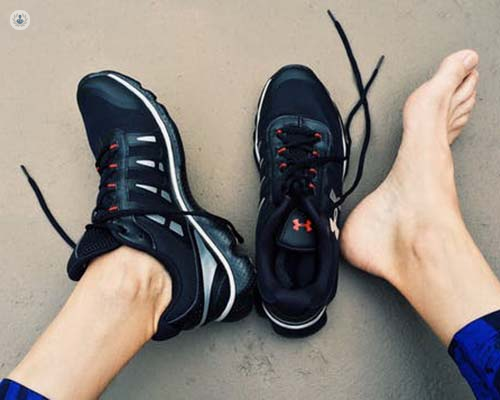How is ankle arthritis managed? An expert's guide
Written in association with:Ankle arthritis can be extremely painful, but luckily, there are treatments available. In his latest article, renowned consultant orthopaedic surgeon Mr Mark Bowen Davies explains this condition in detail, including the symptoms, causes and treatments.

What are the symptoms of ankle arthritis?
Ankle arthritis typically causes pain around the ankle joint. Other common symptoms include stiffness of the ankle, swelling around the joint, bone spurs causing a lumpy-looking joint, deformity of the joint, and instability or a feeling that the joint may ‘’give way’’. Swelling is a common feature associated with pain. Deformity is commonly associated.
What are the causes of ankle arthritis?
The most common cause of ankle arthritis is a previous ankle injury, such as an ankle fracture. Other potential causes or risk factors include rheumatoid arthritis, osteoarthritis, a joint infection that leads to damaged cartilage cells, osteonecrosis and being overweight or obese.
How is ankle arthritis diagnosed?
Ankle arthritis can be diagnosed through a combination of symptoms, physical examination, and imaging tests such as X-rays. In some cases, other tests such as MRI or CT scans may be used for unusual conditions. When ankle arthritis is part of a systemic condition, blood tests may also be used for diagnosis.
How is ankle arthritis treated?
Treatment of ankle arthritis should always begin with simple steps rather than surgery. One of the simplest steps to take is to try some shoe modifications. Cushioned inserts can help alleviate symptoms. Another helpful step is to have a shoe repair specialist add a “rocker-bottom” to the sole of the shoe. To help support the joint and prevent excessive motion, a brace can be fabricated to help hold the ankle joint in position.
Medications such as paracetamol can be used as a first-line treatment for ankle arthritis. Other considerations include nonsteroidal anti-inflammatory drugs (NSAIDs) and corticosteroid injections into the joint.
If non-surgical treatments are not effective, surgery may be considered. Ankle fusion surgery is the standard treatment for advanced ankle arthritis. This surgery removes the worn-out portion of the joint and then permanently holds the bones in a solid position. Ankle replacement surgery is a more controversial treatment for ankle arthritis.
How successful is ankle fusion surgery? How long does it take to recover?
Ankle fusion surgery has a high success rate. About 90% of ankle fusion procedures result in successfully fused bones. Another study found that ankle fusion has a success record of more than 95%.
Complete healing of an ankle fusion may take four to six months. For most individuals, fusion healing takes between 6-10 weeks depending on the specific operation, but some people need more time to recover.
Mr Mark Bowen Davies is a highly-experienced consultant orthopaedic surgeon based in Sheffield. If you would like to book an appointment with Mr Davies, you can do so today via his Top Doctors profile.


